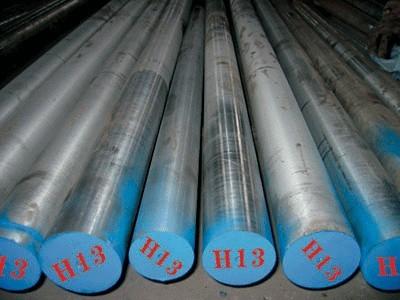Welcome to My Blog! 🌟
Before we dive into the content, I’d love for you to join me on my social media platforms. It’s where I share more insights, engage with our vibrant community, and post regular updates. Here’s how you can stay connected:
📘 Facebook: Connect with me on Facebook
Now, let’s embark on this journey together. I hope you find the content here insightful, engaging, and most importantly, valuable. Let’s explore, learn, and grow together! 🚀
Table of Contents
Introduction


When it comes to high-performance materials in the manufacturing and tooling industries, few options rival the durability and versatility of h13 tool steel. Known for its excellent resistance to thermal shock and its ability to maintain hardness at elevated temperatures, this steel grade has become a mainstay in industries ranging from die casting to injection molding. Despite its popularity, many professionals are still unaware of the full spectrum of benefits that h13 tool steel offers.
This article dives deep into the lesser-known advantages of h13 tool steel, helping you understand why it’s such a valuable asset in heavy-duty applications. By the end, you’ll see why h13 tool steel continues to be a preferred choice for both small-scale workshops and large industrial operations.
Benefit 1: Exceptional Thermal Fatigue Resistance
One of the most critical challenges in tooling environments is thermal fatigue—repeated heating and cooling that can cause materials to crack or fail over time. H13 tool steel excels in this area thanks to its unique chemical composition, which includes chromium, molybdenum, and vanadium. These elements work together to increase the steel’s resistance to thermal stress, ensuring a longer service life.
This makes h13 steel particularly suitable for die casting and hot forging applications, where tools are exposed to fluctuating high temperatures. The ability to withstand thermal cycling without degradation translates to fewer replacements and less downtime, which is invaluable in high-volume production settings.
Benefit 2: High-Temperature Strength and Stability
Another lesser-known benefit of h13 tool steel is its ability to retain hardness and mechanical properties at elevated temperatures. While many steel grades soften under intense heat, h13 tool steel maintains its structural integrity up to 1000°F (538°C) and beyond.
This feature is crucial for applications that involve prolonged exposure to high temperatures, such as plastic injection molds and aluminum die-casting dies. The stability offered by h13 tool steel ensures consistent performance and precision in manufacturing processes, which can significantly improve overall product quality.
Benefit 3: Excellent Machinability and Polishability
Despite its toughness and strength, h13 tool steel is surprisingly easy to machine and polish. This makes it an attractive option for toolmakers who require both durability and a fine surface finish. With proper heat treatment and care, the material can achieve an excellent polish, which is especially beneficial for molds used in optical or decorative plastic components.
This duality of strength and workability sets h13 tool steel apart from other high-hardness steels that are difficult to machine and finish. Whether you’re working with CNC machines or traditional equipment, this steel simplifies the tooling process while maintaining performance standards.
Benefit 4: Consistent Hardness After Heat Treatment


Heat treatment is a common practice used to enhance the properties of steel, but not all materials respond equally well. H13 tool steel stands out for its consistent and predictable results after hardening. This consistency is essential for maintaining dimensional accuracy in precision tooling.
Properly treated h13 steel typically achieves a hardness of 48-52 HRC, offering a perfect balance between toughness and wear resistance. This makes it ideal for components that require long-term durability without sacrificing machinability or flexibility.
Benefit 5: Corrosion and Wear Resistance
While h13 tool steel is not classified as stainless, it offers a respectable level of corrosion and wear resistance due to its alloying elements. The presence of chromium contributes to its ability to resist oxidation, making it more durable in environments where moisture or chemicals may be present.
This makes it a versatile choice not only for high-heat applications but also for tooling scenarios that may involve corrosive elements or abrasive materials. The enhanced surface durability reduces the need for coatings or additional treatments, saving both time and resources.
Comparison Table: H13 Tool Steel vs. Other Tool Steels
| Property | H13 Tool Steel | D2 Tool Steel | A2 Tool Steel | S7 Tool Steel |
|---|---|---|---|---|
| Thermal Fatigue Resistance | Excellent | Poor | Moderate | Moderate |
| High-Temperature Strength | High | Low | Low | Moderate |
| Machinability | Good | Fair | Good | Good |
| Polishability | Excellent | Poor | Fair | Good |
| Wear Resistance | High | Excellent | Good | Moderate |
| Corrosion Resistance | Moderate | Low | Low | Low |
| Typical Hardness (HRC) | 48-52 | 58-60 | 57-59 | 54-56 |
This table highlights the balanced performance of h13 steel across various critical properties. It is not the hardest material available, but its combination of attributes makes it one of the most dependable and versatile tool steels in use today.
Conclusion
The hidden advantages of h13 tool steel make it a powerful option for manufacturers seeking reliability, efficiency, and longevity in their tooling systems. From its resistance to thermal fatigue to its excellent machinability and polishability, h13 tool steel offers a compelling mix of features that cater to a wide range of industrial applications.
Choosing the right material for your tools can dramatically affect operational efficiency and maintenance costs. With h13 steel, you gain a material that not only performs under pressure but also simplifies the manufacturing process and reduces long-term expenses.
FAQ
What industries commonly use h13 tool steel?
H13 tool steel is widely used in die casting, plastic molding, extrusion tooling, and hot forging industries.
Can h13 tool steel be used for cold applications?
While it excels in hot work applications, h13 steel can also be used in cold work environments where moderate wear resistance and durability are required.
Is h13 tool steel rust-proof?
H13 tool steel is not stainless, so it can corrode under certain conditions. However, its chromium content gives it moderate corrosion resistance.
How should h13 tool steel be heat treated?
Heat treatment usually involves preheating, austenitizing, and tempering to achieve the desired hardness and mechanical properties.
Can I weld h13 tool steel?
Yes, but welding should be done with proper procedures, including preheating and post-weld heat treatment to avoid cracking and maintain material integrity.
How does h13 tool steel compare to stainless steel?
H13 tool steel offers superior high-temperature strength and machinability compared to most stainless steels, though it lacks their high corrosion resistance.

